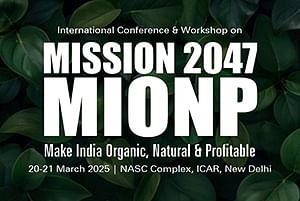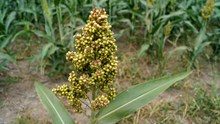
UNESCO has approved the designation of 11 new biosphere reserves in 11 countries, marking a significant step in global conservation efforts. This milestone includes Belgium and Gambia receiving their first biosphere reserves, alongside two transboundary biosphere reserves. The new designations span Colombia, the Dominican Republic, Italy, Mongolia, the Netherlands, the Philippines, South Korea, Slovenia, and Spain. Covering a combined area of 37,400 km², roughly the size of the Netherlands, these additions bring the total number of biosphere reserves to 759 across 136 countries.
The decision was made during the 36th session of the International Co-ordinating Council, UNESCO’s Man and the Biosphere programme's governing body, held in Agadir, Morocco, from July 2 to 5, following the UNESCO Conference on Soils. The Council consists of 34 representatives from UNESCO Member States.
Biosphere reserves are crucial to UNESCO's mission as the United Nations' organization for sciences. These reserves foster innovative sustainable development, protect biodiversity, and address climate change, while supporting local and Indigenous communities through practices like agro-ecology, water management, and generating green income. They also contribute to the goals set by the Kunming-Montreal Global Biodiversity Framework, aiming to protect 30% of Earth's land and marine areas and restore 30% of degraded ecosystems by 2030.
The 11 Newly Designated Biosphere Reserves
1. Kempen-Broek Transboundary Biosphere Reserve (Belgium, Netherlands): This reserve features a landscape of low-lying terrain with sand covers, transformed wetlands, and a blend of marshes, ponds, and bog forests. It is renowned for its dragonfly habitats and diverse bird species. Spanning 264 km², it supports about 75,000 people and is shared between Belgium and the Netherlands.
2. Darién Norte Chocoano Biosphere Reserve (Colombia): Located in the Darien ecoregion, this reserve connects the biodiversity of North and South America. It spans 3,016 km², including lush tropical rainforests and marine areas. Home to 24,287 people, primarily Indigenous and Afro-Colombian communities, the reserve promotes sustainable farming and ecotourism.
3. Madre de las Aguas Biosphere Reserve (Dominican Republic): Covering 9,374 km², this reserve includes diverse ecosystems across 11 provinces and 35 municipalities. It supports a population of 472,526 and is home to numerous endemic bird species. The reserve aims to resolve land conflicts through sustainable development and ecotourism.
4. Niumi Biosphere Reserve (Gambia): Stretching along the Gambia River, this reserve includes pristine mangrove forests and significant historical sites like Kunta Kinteh Island. Covering 1,937 km², it supports 178,000 inhabitants engaged in farming and fishing.
5. Colli Euganei Biosphere Reserve (Italy): This reserve in northeastern Italy features 81 volcanic hills and is known for its thermal waters and rich biodiversity. Spanning 341 km², it supports a population of 111,368 and focuses on sustainable agriculture and ecotourism.
6. Julian Alps Transboundary Biosphere Reserve (Italy, Slovenia): Formed by merging two existing reserves, this transboundary reserve covers 2,671 km² and includes alpine mountains and karst plateaux. It supports 109,060 people and boasts rich biodiversity, including brown bears and lynxes.
7. Khar Us Lake Biosphere Reserve (Mongolia): Located in western Mongolia, this reserve covers 14,153 km² and includes diverse ecosystems like aquatic realms and deserts. It supports sustainable livestock herding and ecotourism.
8. yApayaos Biosphere Reserve (Philippines): Spanning 3,960 km², this reserve in Apayao Province features rugged terrain and diverse ecosystems. It supports 124,366 people, primarily engaged in agriculture, and aims to promote ecotourism and conservation.
9. Changnyeong Biosphere Reserve (South Korea): This reserve in Gyeongsangnam-do Province covers 531 km² and includes diverse landscapes like forests and wetlands. It supports sustainable agriculture and ecotourism.
10. Val d'Aran Biosphere Reserve (Spain): Located in the Catalan Pyrenees, this reserve spans 632 km² and supports 9,983 people. It focuses on biodiversity protection and revitalizing traditional practices.
11. Irati Biosphere Reserve (Spain): This reserve in the western Pyrenees covers 537 km² and includes expansive beech forests. It supports 2,435 people and emphasizes community-driven conservation efforts.
These additional biosphere reserves demonstrate UNESCO's dedication to maintaining biodiversity, promoting sustainable development, and assisting local populations around the world.

















